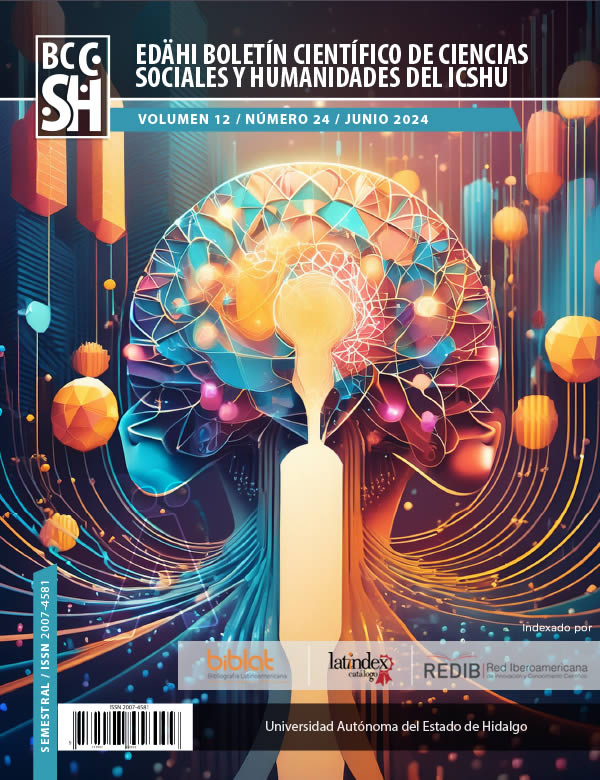The role of accents in College EFL classes in Mexico
Abstract
This article investigates the role of accents in an English as a Foreign Language classroom with college students in Mexico. The paper starts by defining key concepts necessary to understand the topic, such as accent and different types of accents. Then, a description of the setting and participants is presented, followed by a detailed explanation of how the study was carried out and a discussion of the results. This study demonstrated that there is no need to use just one type of accent in the EFL classes but rather a variety of accents regardless of the student's proficiency level. What is needed, however, is to design warm-up activities to prepare students for listening to audio recordings to succeed with the tasks.
Downloads
References
Amabele, E. & Boonsuk, Y. (2021). Thai Tertiary Learners’ Attitudes towards Their Thai English Accent. PASAA Vol. 61 January - June 2021. Retrieved from: https://files.eric.ed.gov/fulltext/EJ1304983.pdf
Birner, B. (1999). Why Do Some People Have an Accent? Linguistic Society of America, Washington, DC. Retrieved from: https://files.eric.ed.gov/fulltext/ED426604.pdf
Büyükahiska, D., & Uyar, A. C. (2019). The Effects of Different Accents on Listening Comprehension in EFL Classes. OPUS International Journal of Society Researches, 14(20), 1369-1394. https://doi.org/10.26466/opus.610859
Canan, K. & Inal, D. (2020). EFL Learners' Perceptions on Different Accents of English and (Non)Native English-Speaking Teachers in Pronunciation Teaching: A Case Study through the Lens of English as an International Language. Journal of English as an International Language, v15 n2 p119-144. Retrieved from: https://files.eric.ed.gov/fulltext/EJ1282861.pdf
Charpentier-Jiménez, W. (2019). University students´ perception of exposure to various English accents and their production. Revista Actualidades Investigativas en Educación, 19(2), 1-19. Retrieved from: https://www.scielo.sa.cr/pdf/aie/v19n2/1409-4703-aie-19-02-61.pdf
Creswell, J. (2004). Research Design. Qualitative, quantitative, and mixed methods approaches. Third Edition. SAGE. Retrieved from: https://www.ucg.ac.me/skladiste/blog_609332/objava_105202/fajlovi/Creswell.pdf
Jidong, W., Fatema, K. & Yeboah, J. (2021). Effects of listening comprehension of different non-native English accents of Chinese learners of English. Middle Eastern Journal of Research in Education and Social Sciences (MEJRESS). Vol. 2, Issue 1. Retrieved from: https://bcsdjournals.com/index.php/mejrhss/article/view/129/79
Kelch, K., & Santana-Williamson, E. (2002). ESL students’ attitudes toward native- and nonnative- speaking instructors’ accents. The CATESOL Journal. 14.1. Retrieved from: http://www.catesoljournal.org/wp-content/uploads/2014/07/CJ14_kelch.pdf
Kemmis, S., & Wilkinson, M. (1998). Participatory action research and the study of practice. New York: Routledge. Retrieved from: https://another-roadmap.net/articles/0002/0967/atweh-action-research-in-practice-1998.pdf
Mogashoa, T. (2014). Applicability of Constructivist Theory in Qualitative Educational Research. American International Journal of Contemporary Research. Vol. 4, No. 7. Department of Curriculum and Instructional Studies. South Africa. Retrieved from: http://www.aijcrnet.com/journals/Vol_4_No_7_July_2014/7.pdf
Rajaei, Z. (2015). The Role of Pre-listening Activities on EFL Learners’ Listening Comprehension. International Journal of Foreign Language Teaching & Research – Volume 3, Issue 10, Summer. Retrieved from: https://jfl.iaun.iau.ir/article_563500_0995a1745d36eb4624100ecdaf9eb873.pdf
Seers, K. (2011). Qualitative data analysis. BMJ Journals. Retrieved from: https://ebn.bmj.com/content/15/1/2
Sumalinog, G. (2018). Factors Affecting the Listening Comprehension Skills of the Foreign Students. International Review of Social Sciences Vol. 6 Issue.11. Retrieved from: https://d1wqtxts1xzle7.cloudfront.net/88094785/Factors_Affecting_the_Listening_Comprehension_Skills_of_the_Foreign_Students_-libre.pdf?1656523291=&response-content-disposition=inline%3B+filename%3DInternational_Review_of_Social_Sciences.pdf&Expires=1705377934&Signature=Hh46Y0iuXmVvbVutVKqQYNAaFneT2I47Bswpyk1cG8~xUAz9z1RuArafwIK5ndyeRlsqyv6-U8k5NuurINrVhfvOcbG3v5VMBYdImDcUV1x6uZKGQw1mxmr90xGm0bRnsWb0zkanMa~ST0gz4v4hFWygtzIassSojdBdHW23A10MzZl8Dsx8BK655uQr~hTDlb1KtMz0xupDY8Ovld0I46uvkz-eTQMkRMxQdjvrkr966rA~Nqd99h~DyMFqH6xZxULwmsWMhvoDuTwfytByYWw7xASLXUcdR2NidDUP70eqZG70z9LAO5bJEU2aPROpgd~k86J~CBXSEV6s1Ik3-g__&Key-Pair-Id=APKAJLOHF5GGSLRBV4ZA
Tous, M., & Haghighi, S. (2013). The effect of teaching culturally-oriented materials on the listening comprehension of Iranian EFL learners. Modern Journal of Language Teaching Methods. Vol. 3, Issue 4. Retrieved from: https://d1wqtxts1xzle7.cloudfront.net/32269008/Modern_Journal_of_Language_Teaching_Methods-libre.pdf?1391582455=&response-content-disposition=inline%3B+filename%3DAn_investigation_into_the_strategies_app.pdf&Expires=1705381882&Signature=dLCj70FRWB~f3Wo5sGkCiUmWYd3QqxIumVw9T-Qj1D8~DoCyGUNzBdZlEa1CIiuGbAKnopH0eAOhS~cUCCC0gZd0QWV8CwBXfvN8~PxG2PZ2iFl2KnhovN7HO~Ua-Y-phnqa6XIev7Q9TFZ~oTyA7nRjoVpijOmw5rC446-4LSXxeFlCouQdo3FEPQ2kiwIeNIpxBEIY5lMdR~~AUO-rrcjYosXpynlUjnFJ-AJCMnml-wkG5JvjEZMEamP9NZZG3y-LvVeq5k9iYYt~LFLL0DLYqJp9TazSAHcBIw4FRH6lvGDcD4-Gg~2I96C29gZMYcyqrYyMrxibz6Zvl93JUA__&Key-Pair-Id=APKAJLOHF5GGSLRBV4ZA#page=64
Ussher, S. (2020). Research Instruments. OPEN SCIENCE HUB NETWORK. Retrieved from: https://ec.europa.eu/research/participants/documents/downloadPublic?documentIds=080166e5d41cfeea&appId=PPGMS
Van Gelder, J. (2019). The Effect of EFL learners' Attitudes towards Native English Accents on Listening Comprehension and Comprehensibility. Treballs de fi de master. University Pompeu Fabra. Retrieved from: https://repositori.upf.edu/bitstream/handle/10230/43017/vangelder_2019.pdf?isAllowed=y&sequence=1
Zhiying, W. (2015). The effect of accent on listening comprehension: Chinese L2 learners’ perceptions and attitudes. THAITESOL JOURNAL, Vol.31(2). Faculty of Arts, University of Melbourne, Australia. Retrieved from: https://files.eric.ed.gov/fulltext/EJ1247306.pdf
Copyright (c) 2024 Jimena Béjar Mena, Hilda Hidalgo Avilés, Abigail Carretero Hernández

This work is licensed under a Creative Commons Attribution-NonCommercial-NoDerivatives 4.0 International License.













